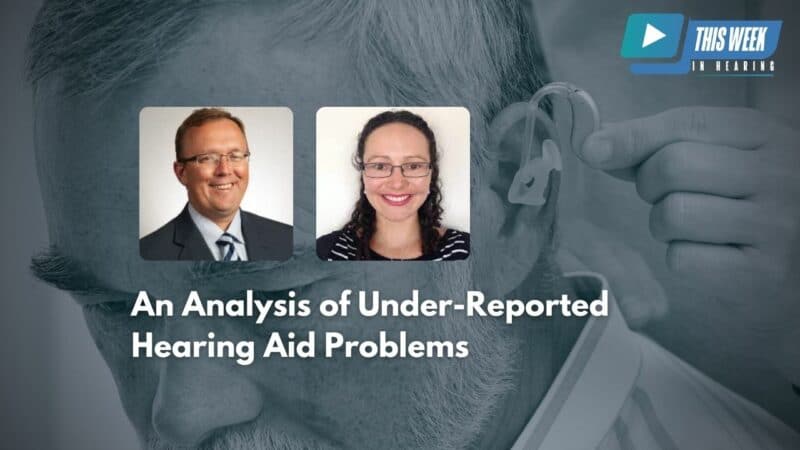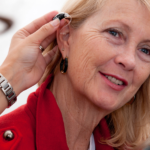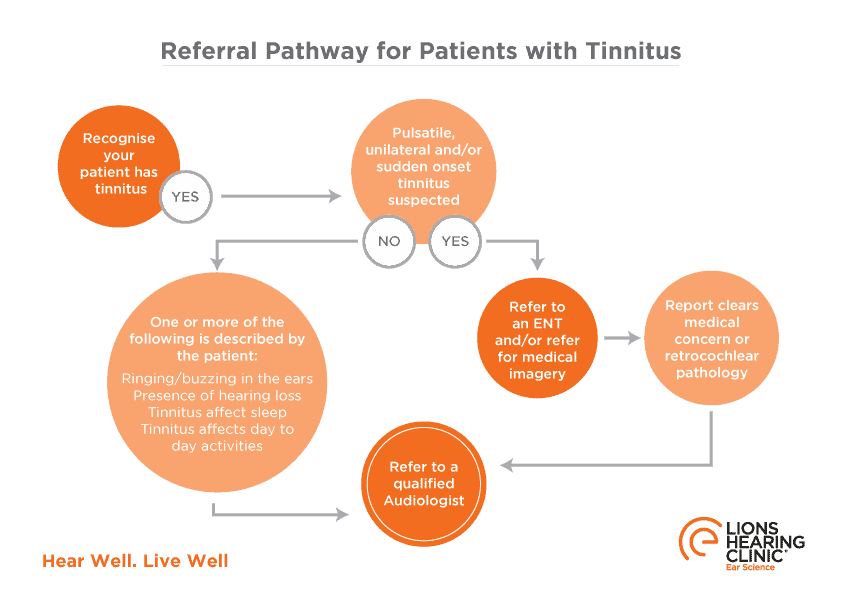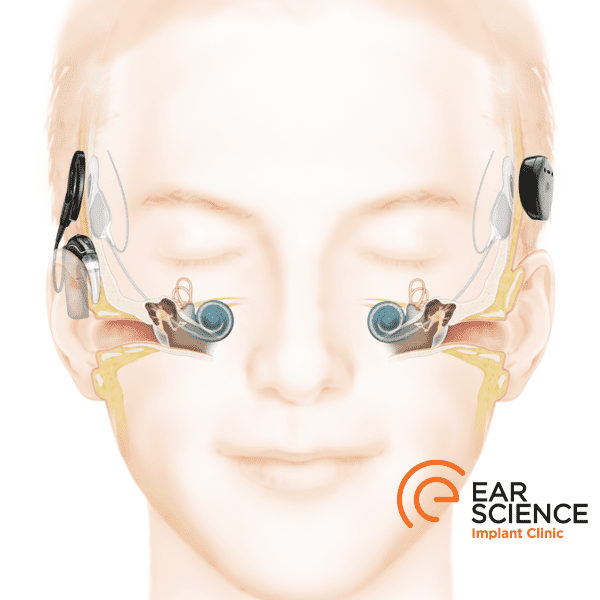
2 in 3 Australians will experience tinnitus at some point in their life
If you are experiencing ringing or buzzing in your ears, it could be tinnitus.
Take this quick tinnitus quiz to see if you need to have a tinnitus appointment with one of Lions Hearing Clinics’ specialist tinnitus audiologists.
Tinnitus affects a great deal of Australians. It is estimated that two in three Australians experience tinnitus (HealthDirect, 2021). While there is no cure for tinnitus, there are management and treatment options to reduce the harmful impact tinnitus has on your quality of life.
Hearing loss of any degree is the most commonly recognised cause of tinnitus; therefore, it is important that both hearing and tinnitus are assessed by an audiologist. However, does the quality of fitting hearing aids make a difference when treating hearing loss and tinnitus?
It is accepted that hearing aids should be the first thing to be considered for someone with tinnitus and hearing loss. Many studies have provided evidence to support that hearing aids reduce the sensitivity of the brain to sounds, decrease automatic negative reactions to tinnitus sounds and/or reduce the stress level that results from living with tinnitus.
At Lions Hearing Clinic, it is standard practice that all hearing aids fittings are verified using Real Ear Measures (REM). Everyone’s ear canal is different. The step of verification with REM makes sure that the hearing aid is tuned correctly to the shape of the ear, thereby ensuring that the sound quality is optimised.
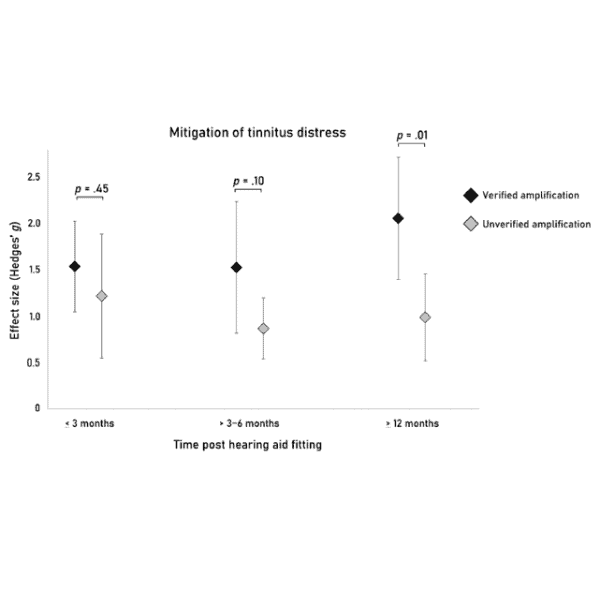
Mitigation of tinnitus distress
A recent study by Sebastian Waechter and Anders Jönsson from the University of Lund in Sweden found tinnitus distress was twice as likely to be reduced if the hearing aid fitting was objectively verified than if the verification was not conducted.
They found 27 published studies that involved 1,400 people and separated them into two groups:
- Those where hearing aid fitting was done with objective verification, and
- Those where hearing aid fitting was done without verification.
The study showed that tinnitus distress is reduced when verification is not used but that this effect wanes somewhat over 12 months (see grey diamonds in the figure). However, if hearing aid fitting is verified by REM, then tinnitus reduction is much larger.
Furthermore, the beneficial effect increases over 12 months (see black diamonds in the figure). By this time, those with verified hearing aids have significantly less tinnitus distress than those with unverified hearing aids.
If you want to read the full paper, contact the authors or Rob Eikelboom.
Lions Hearing Clinic, part of Ear Science Institute Australia, strives to provide clients with help that is based on evidence.
This study confirms that verifying hearing aid fittings for clients with tinnitus has a greater chance of reducing the distress caused by tinnitus.

